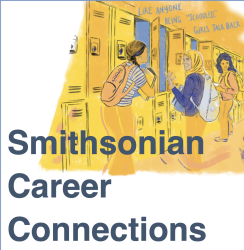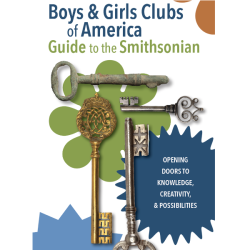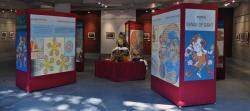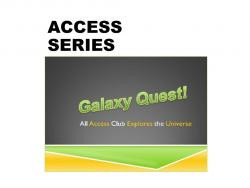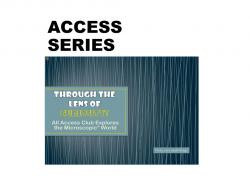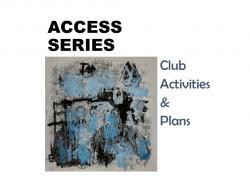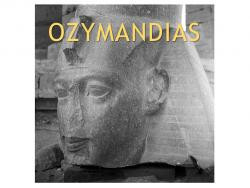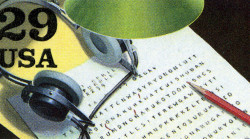Tracie Spinale
Learning Programs Manager
Smithsonian Institution
Middle School (13 to 15 years old), High School (16 to 18 years old), Post-Secondary
Teacher/Educator, Curriculum Coordinator, Parent, Museum Staff
Language Arts And English, Science, Social Studies, Arts, Special Education, Career and Tech Ed, Other
: Museum Studies
Hi there! I am the Learning Programs Manager at the Office of the Under Secretary for Education (OUSE) where I focus on positive youth development programs.
Enjoy!
- Positive Youth Development
- 4-H & 4-H Guide to the Smithsonian booklet
- Boys & Girls Clubs of America
- All Access Digital Arts Program - Collections for teens and youth with cognitive differences
- Distance Learning Resources
- A cultural science series from the Smithsonian Arctic Studies Center in Alaska (#arcticstudies)
- Maker and activity collections about environmental and social justice issues
- Topical collections
- A series on the intersection of Buddhism and Western Science
Tracie Spinale's collections
Smithsonian Career Connections
<p>Check out the wide variety of careers available at the Smithsonian and Smithsonian-adjacent fields. From Art to Zoology and everything in-between--if you have a passion and interest--there's a STEAM career for you!</p>
 Tracie Spinale
Tracie Spinale
88
Boys & Girls Clubs of America (BGCA) Guide to the Smithsonian // Activities
<p>The content in this Guide, along with the accompanying online resources and activities in the Smithsonian Learning Lab, features people, places, and things of the Smithsonian Institution around the Boys & Girls Clubs of America (BGCA) themes of: </p>
<ul><li>DEMOCRACY & CIVICS </li><li> DIVERSITY, EQUITY, ACCESS & INCLUSION</li><li> STEM, HEALTHY LIVING & ENVIRONMENT</li><li>SOCIAL IDENTITY</li><li>CAREERS</li></ul>
<p>With over 157.2 million objects and specimens in our collections, we’ve selected <em>some</em> of the most relevant and interesting content the Smithsonian has to offer for BGCA youth and teens based on these topics on or near the National Mall in Washington, D.C. during the Summit for America's Youth. <br></p>
<hr>
<p>BONUS: <a href="https://learninglab.si.edu/q/ll-c/xBNvZo0yH1st2hrY" target="_blank">Smithsonian Career Connections</a></p>
 Tracie Spinale
Tracie Spinale
136
Representation of Girls - Gender Diversity, Empowerment and Stereotypes
<p>This topical collection looks at girls' diversity and empowerment, as well as gender stereotypes. Examples below are depictions of girls--both antiquated and modern--domestic and career expectations, educational opportunities, personal grooming and beauty, emotions and attitudes, and traditional representations.</p><p><br>How have views of girlhood changed over time? What images evoke strength and empowerment? What are some stereotypes? What is still true of girlhood today?</p>
 Tracie Spinale
Tracie Spinale
96
Murals
<p>Examples: videos about murals at the Smithsonian; murals about pieces in the Smithsonian collections; murals about social issues; murals through time; artists working on murals; design process of murals; celebratory murals about various kinds of labor and industries; protest murals; murals depicting an idealized version of history; example of student project/artist statements</p>
 Tracie Spinale
Tracie Spinale
113
SENSES SERIES
<p>Aggregate of Learning Lab collections about the Smithsonian collaboration with the Science for Monks and Nuns Program - senses and sensory perception.<br /></p>
 Tracie Spinale
Tracie Spinale
11
ACCESS SERIES | Galaxy Quest
<p><strong>IMPORTANT: Click on the "i" for information icon and the paperclip icons as you move through the collection.</strong></p>
<p>Have you ever wondered what's going on out there in the universe? Would you like to discover exciting things about planets, stars, and galaxies? Today, we will go on a GALAXY QUEST to EXPLORE THE UNIVERSE!<br><br>RATIONALE | Digital technology has transformed how we explore the Universe. We now have the ability to peer into space right from our homes and laptop computers. Telescopes, photography, and spectroscopy remain the basic tools that scientists—astronomers and cosmologists—use to explore the universe, but digital light detectors and powerful computer processors have enhanced these tools. Observatories in space—like the Hubble Space Telescope—have shown us further into space then we have ever seen before.<br><br><strong>EDUCATORS | </strong><a href="https://learninglab.si.edu/q/ll-c/vAnMbmJMKjsNVbpW#r/379939">LESSON PLAN</a> of the original "Galaxy Quest" <br><br>Lesson Objectives:<br>1. Process and save at least one digital image of a galaxy or space image (with caption)<br>2. Create a three-dimensional astronomy sculpture (galaxy or other space body, space alien, plant, animal)<br>3. Create a digital astronomy sculpture (galaxy or other space body, space alien, plant, animal)<br>4. Visit the Explore the Universe exhibition at NASM and identify Hubble parts (mirror, lens, spectroscope)<br><br>Learning Objectives:<br>1. What a galaxy is<br>2. What a space telescope is<br>3. Learn how to open an image on the computer and process it<br>4. Socialize well in the museum setting</p>
<hr>
<p>Tags: astrophotography, galaxy, space, maker, decision-making, self-determination, access, disability, accessibility, neurodiversity, special education, SPED, out of school learning, informal learning, distance learning, cognitive, social skills, engagement, passion, creativity, empowerment, All Access Digital Arts Program, teens in museums, teens, teenagers, after school, out of school learning. <br></p>
<p></p>
 Tracie Spinale
Tracie Spinale
70
Shelley's "Ozymandias" Poem: Museum Objects and Inspired Art
<p>How have museum objects and antiquities inspired arts and literature? Read and listen to a famous poem written two hundred years ago by English author Percy Bysshe Shelley, "Ozymandias." Then, view artworks which in turn were inspired by the poem. View the environmental landscapes and settings in ancient Egypt which inspired the original poem about the colossal sculpture of a famous ruler from over three thousand years ago. The collection concludes with a link to view a draft of the poem. Will Shelley's work inspire the creation of your own poem or artwork about a place you've traveled, or an object you've seen in a museum?</p>
<p>For a hand's-on paper-craft activity for younger students, visit <a href="https://learninglab.si.edu/q/ll-c/8MmERhz4keCesAxN"><strong>Nile, Nile Crocodile</strong></a> collection</p>
<p>keywords: sonnet, Ancient Egypt, Rameses II, Thebes, impermanence, cultural patrimony, distance learning, poetry, object-based learning</p>
 Tracie Spinale
Tracie Spinale
23
Ciphers and Codes
<p>Throughout history, ciphers and secret codes were devised to keep intelligence from falling into the wrong hands. From the WWII German "Enigma" machine, to America's Cherokee Code Talkers, people used ciphers and codes to safeguard secrets. One of my favorite mysterious artworks is the sculpture <em>Antipodes,</em> outside of the Hirshhorn Museum. No one knows what it means, and its companion piece <em>Kryptos</em> is at Langley. Use this collection an inspiration piece for puzzle lovers and mystery solvers both young and old. There are many free sites on the web that you can use to create your own coded messages like, "Jsotd ymj Qjfwsnsl Qfg!" (Hint: Caesarian Shift).</p>
 Tracie Spinale
Tracie Spinale
25
Access Series: Great Face! Portraits and Photo Composition
<p>Taking a great portrait is more than just taking a quick snap of a face. It requires thoughtful contemplation and a variety of choices by the photographer. This is a collection of photographs that illustrate various principles of portrait photography: angles (eye-level, high angle, low angle, and bird's eye), light and shadow, framing, and shot length (long-shot, medium-shot, close-up, & extreme close-up); As well as mood--capturing a feeling or emotion in a photograph; scale--how big or small subjects look; and sense of place--capturing the feeling of a place. Click into each photo and on the "paper clip" annotation icon to read more information and complete challenges.</p>
<p>Tags: portrait photography, decision-making, self-determination, student empowerment, disability, All Access Digital Arts Program, teens in museums, teens, teenagers, after school, out of school learning, informal learning</p>
 Tracie Spinale
Tracie Spinale
21
Access Series: Nostalgic Popular "Pop" Culture
<p>This inspiration collection of nostalgic popular "pop" culture from the 1950s, 1960s, 1970s, 1980s, 1990s and 2000s—super heroes and super villains, Muppets, cartoon characters, Star Wars, Disney and Pixar characters, Transformers, and movies was used for a collage activity and discussion prompt in an informal learning activity, "Me & My World: Personal Ecology/Interest Inventory" with a group of teens with cognitive and intellectual disabilities. Students were asked about their favorite pop culture influences from the past and present. <br></p>
<p>Use one of the activity prompts to spark discussion.</p>
<p>Tags: decision-making, self-determination, student empowerment, disability, All Access Digital Arts Program, teens in museums, teens, teenagers, after school, out of school learning, informal learning</p>
 Tracie Spinale
Tracie Spinale
83
Access Series: Flying Things
<p>This topical collection of airplanes, hot air balloons, space craft, and other things that fly, was originally used in a collage art activity (printed out; using paper, glue, and art materials). It was used as a discussion prompt in an informal learning activity with a group of teens with cognitive disabilities during a summer camp program--as pre-museum visit preparation to artifacts that would be found at an airplane museum. </p>
<p>Other suggested uses beyond collage and discussion prompts would be a writing exercise, "If you could fly anywhere, where would you go and what would you do?" Use the visible thinking routine, "See|Think|Wonder" as a starting point for the writing prompt, and the images for inspiration. There is a suggested lesson plan included which can be adapted to a visit to an air and space museum.</p>
<p>Tags: decision-making, self-determination, student empowerment, disability, all access digital arts program, teens in museums, teens, teenagers, after school, out of school learning, informal learning</p>
 Tracie Spinale
Tracie Spinale
94
Access Series: Making Music and Sonic Self-Portraits
<p>This inspiration collection of musical people and music instruments was used for a music-making activity and discussion prompt in an informal learning activity with a group of teens with cognitive and intellectual disabilities. Students used GarageBand software to create sonic self-portraits. Prior to the activity, teens were asked about their favorite genres of music, including jazz, blues, classical, rock, pop, rap, and R&B. A lesson plan for making and creating music, and sonic self portraits is also included.</p>
<p>Tags: decision-making, self-determination, student empowerment, disability, All Access Digital Arts Program, #SmithsonianMusic, teens in museums, teens, teenagers, after school, out of school learning, informal learning<br></p>
 Tracie Spinale
Tracie Spinale
43

